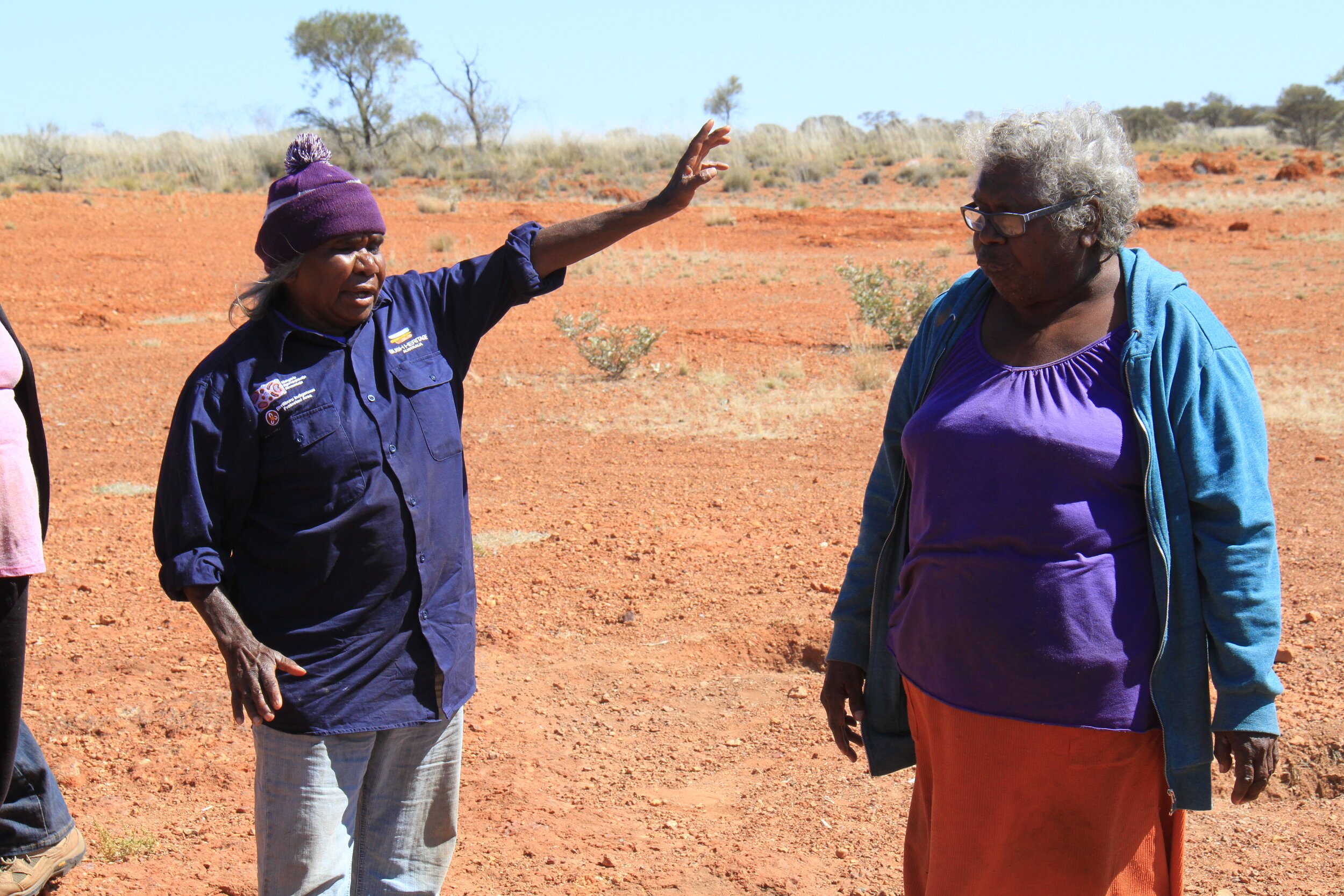
Martu Aspirations for Country
Martu Aspirations for Country
“Younger people need to know how to keep country healthy. They can work with scientists.”
“We gotta try two-way learning more. Education is about teaching our young people bush way too. We can also teach white fellas.”
“We gotta have jobs for people on country. Looking after land, burning country.”
Martu view Country holistically and see the protection of natural values supporting cultural, educational and economic activities across the Native Title Determination Area.
Matuwa, Kurrara Kurrara and Lake Carnegie are seen as a cultural resource linked to continuing traditional activities including hunting, camping, ceremony, burning, and sacred site protection and maintenance. There is not a clear distinction made between seeing the land as a cultural resource and it being conceived as an environmental resource – these two concepts are fused.
Martu also understand Matuwa, Kurrara Kurrara and Lake Carnegie as a historical resource linked to the preservation of historic Martu sites. The focus is on telling the history of families and individuals who worked and lived on the properties during the pastoral-era as well as stories of early contact at locations such as Yimbin Rock Hole and Sydney Heads Pass. Historic living areas such as the Pope’s Well and the Martu camps at Earaheedy and Lorna Glen Homestead are considered as places where Martu pastoral history could be told.
Martu also view Matuwa, Kurrara Kurrara and Lake Carnegie as an economic resource linked to ongoing ranger work and paid land management, research, and co-management activities with the Western Australian government. There is a strong desire expressed to see the areas generate employment for youth and more opportunities for young women in particular. Martu economic uses for the National Park and Nature Reserve areas, including tourism, seed collecting, and ranger work, are considered as being generally compatible with other forms of existing land use in the area. Conservation needs to be supported by real economic opportunity in the form of jobs and ongoing funding and land management and research activities fulfilling Martu economic aspirations.
Matuwa, Kurrara Kurrara and Lake Carnegie are an educational resource: locations where educational activities linked to the National Park and Nature Reserve areas’ economic, cultural and historical uses can be carried out. For example, Matuwa and Kurrara Kurrara can be used to teach younger Martu and non-Indigenous people about former pastoral and traditional lifestyles and as a location where training programs for employment linked to land management and research can be held. Martu will focus on activities involving bonding between generations, education, and learning, particularly with school-age children.
